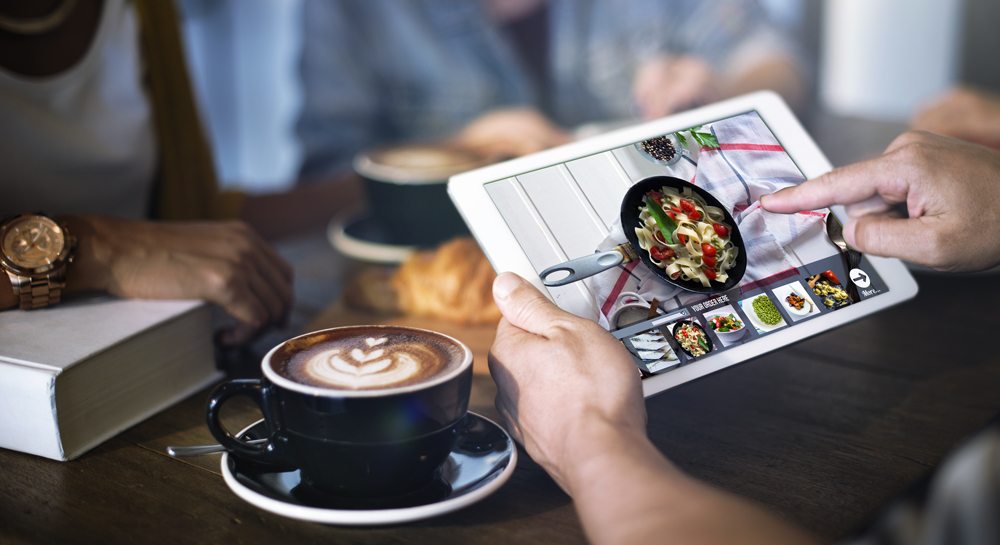
Last year, a newly married colleague and his wife invited me to an upscale restaurant for lunch. Once we were seated, the waiter handed us an electronic tablet instead of a printed menu card, on which we could browse pictures and descriptions of dishes, and then choose them by pressing a button on the touchscreen — somewhat like ordering food on mobile phone apps like Swiggy or Zomato. This got me thinking — was this a smart move by the restaurant?
Why was I, along with my other tech-savvy friends, uncomfortable with this new way of ordering food?
Let us analyse this decision.
I consider myself fairly tech-savvy, as I am guessing were most of the other patrons in the restaurant, located in Koramangala, the epicentre of Bangalore’s startup revolution. I have also used online food delivery apps many times. Then why was I, along with my other tech-savvy friends, uncomfortable with this new way of ordering food? Was it because I was not used to using a touchscreen in a restaurant setting?
One possible reason could be what behavioural economists call the status quo bias, a tendency of people to prefer what they are comfortable with and discomfort over something new. This bias was formalised by William Samuelson and Richard Zeckhauser, who found that individuals exhibit this bias both in controlled experiments as well as real life contexts like sticking to familiar health plans and retirement schemes. The status quo bias could be one of the reasons you have not yet shifted to the revolutionary new mobile data plan, a better investment scheme, or a new brand of cereal. In our case, the unfamiliarity of ordering food digitally in a restaurant may have made us uncomfortable.

One possible reason could be what behavioural economists call the status quo bias, a tendency of people to prefer what they are comfortable with and discomfort over something new
However, once forced to confront an altered status quo, the bias is easily overcome. At least for the time being, the status quo had been altered by the restaurant staff, with the simple absence of a conventional printed menu. Many companies face the invisible wall of the status quo bias while introducing radically new products into the market, where they cannot force a change in the status quo, unless there is huge benefit to the new alternative (think Uber’s functionality or the first iPhone’s far superior design and functionality over Nokia’s best models in 2007) or a forced change in status quo via regulation (think demonetisation speeding up adoption of online wallets).
A sobering fraction of new innovations fail, and one possible reason could be that the perceived benefits do not often justify the sum of the explicit switching cost and the invisible switching cost brought about by the status quo bias.
Many companies face the invisible wall of the status quo bias while introducing radically new products into the market
Anyhow, the restaurant had gotten us to use their tablet. Were our choices different now? Turns out that they may have been – recent research by Hao Shen, Meng Zhang and Aradhna Krishna, has shown that touch interfaces such as the ones we were using, may have led us to order more hedonistic dishes (like butter chicken and butter naan, which are associated with pleasure rather than functional benefits) rather than utilitarian ones (like salads, dal or tandoori roti, whose perceived functional benefits outweigh the pleasure derived from them), presumably yielding higher revenues to the restaurant.
But why should a touchscreen change our preferences? Like touching an actual product makes it more vivid to us, the next best thing is to present a vivid image that simulates the actual touch experience, stimulating preference for goods that bring us pleasure rather than functional value.
Recent research has shown that touch interfaces may lead us to order more hedonistic dishes, which are associated with pleasure rather than functional benefits, rather than utilitarian ones
Moving on from theoretical concerns to purely practical ones, the tablet computer is directly connected to a computer server. Unlike many other restaurants where waiters take down orders and later enter them into a centralized computer, this system may have increased process efficiency and billing. Fast food chains like McDonald’s have successfully reduced manpower costs and customer queues in Europe, by moving a lot of orders to in-store touchscreens-cum-payment terminals instead of manual ordering.
However, unlike McDonald’s, which is a Quick Service Restaurant (QSR), our restaurant was upscale and personal service is supposed to be part of the hedonistic experience. Also, it served primarily north Indian food eaten by hand. Unlike Swiggy, we were planning to make multiple orders. What were we to do? Would we be dissuaded, or would we wash our hands before ordering again? Or would we make the waiter show us the menu and make him press the buttons?
This column is intended to showcase interesting academic research in marketing. The technically oriented reader is encouraged to read the original research articles cited in the column.
Subscribe to FactorDaily
Our daily brief keeps thousands of readers ahead of the curve. More signals, less noise.








